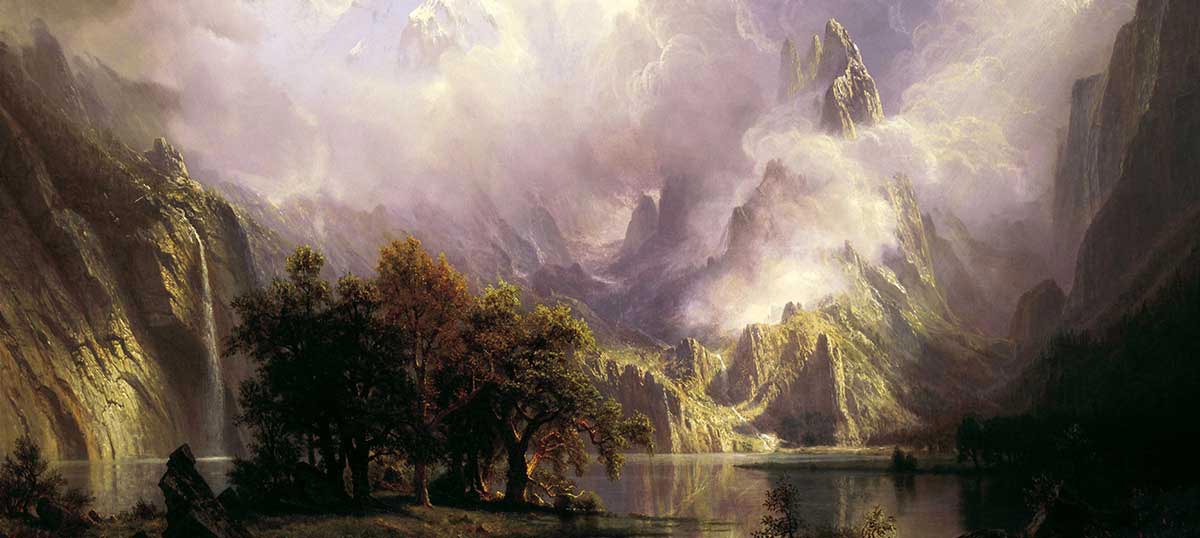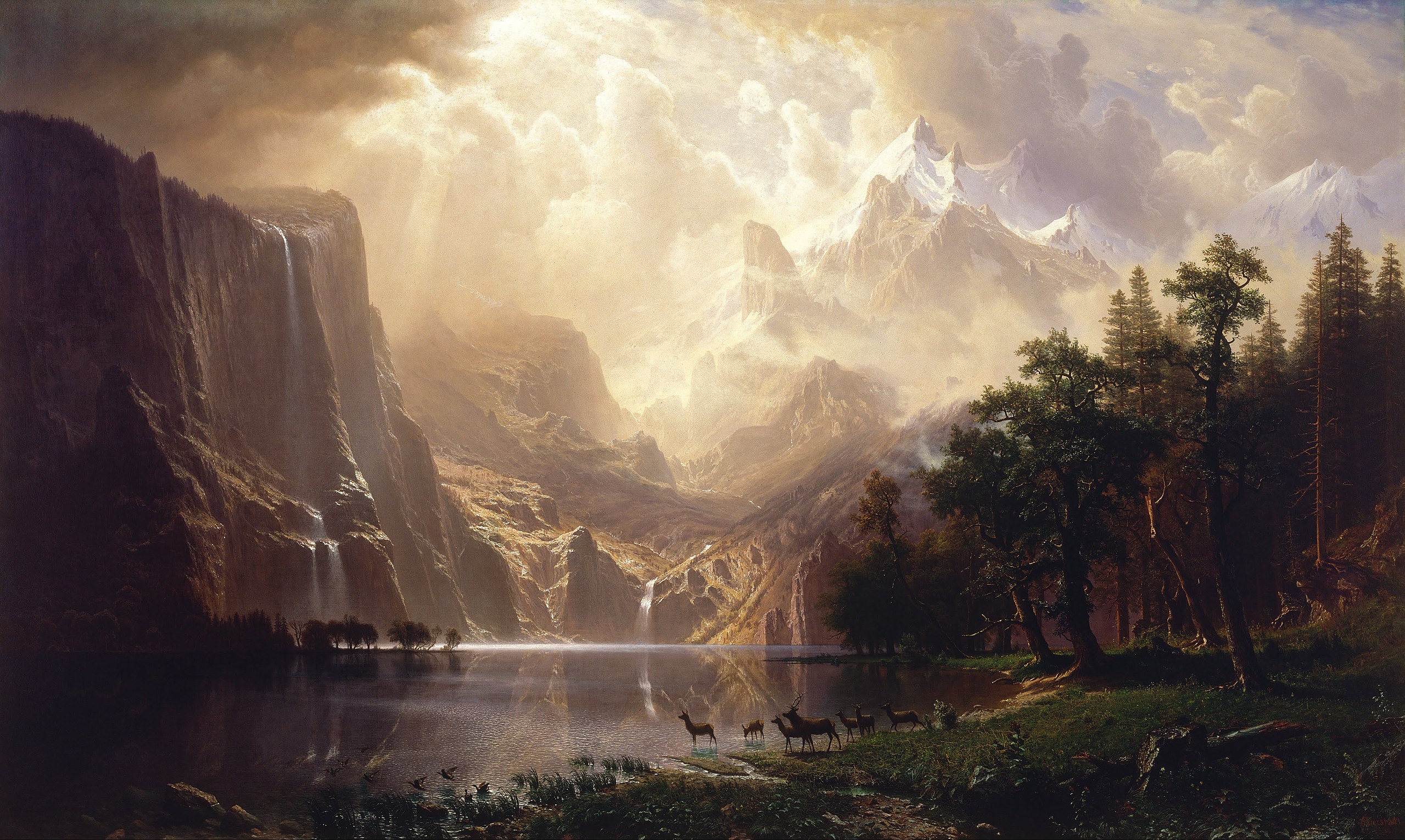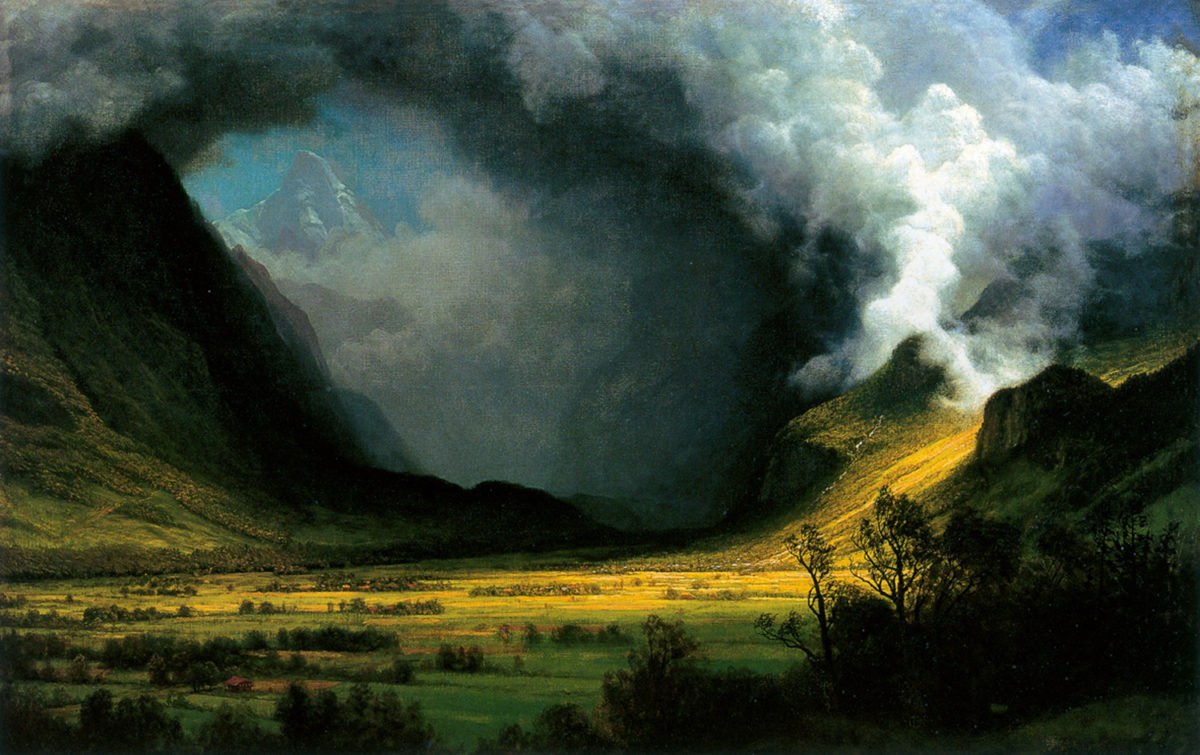
Welcome to the latest in my semi-regular series of blog posts about artists that inspire me. As a photographer, I’m fascinated with how landscape artists of different media (in this case, paint) approach light; I feel that by analyzing and appreciating other artists’ works, we can gain insight and inspiration into our own art form.
Albert Bierstadt, 1830-1902, was a German-American landscape painter, known best for his large-scale landscapes of the American west. As part of the second generation of artists in the Hudson River School, Bierstadt used that group’s signature style of romanticized landscapes and dramatic glowing light, sometimes referred to as “luminism.”
Born in Germany, Bierstadt came to the United States as a toddler. In 1859, he joined an overland survey expedition with Frederick Lander, a land surveyor for the United States Government. Lander had been employed to survey, engineer, and build what would become known as the Lander Trail across Wyoming and Idaho. Bierstadt wrote of this expedition: “the artist ought to tell his portion of…history as well as the writer; a combination of both will assuredly render it more complete.” The studies and sketches he did during these expeditions would provide basis for his huge paintings when he returned home. Lander’s routes created during this time would be used for many years to come, and you may recognize his name from places like Lander Peak and the town of Lander, Wyoming. Frederick Lander would later die in the Civil War.

Bierstadt continued his westward exploration in 1863, when he joined writer Fitz Hugh Ludlow on an expedition to Utah, San Francisco, and Yosemite Valley. Ludlow was known for his book detailing his adventures with drug use, “The Hasheesh Eater,” and was art critic for The New York Evening Post, where he praised Bierstadt’s work, who was at this point getting quite well-known as an artist. Ludlow chronicled this trip with Bierstadt in articles for The Atlantic Monthly, and later compiled it into a book, titled The Heart of the Continent.
Bierstadt continued to explore the American west, at one point paying a substitute to take his place when he was drafted for the Civil War. Unlike many well-known artists, he enjoyed fame and fortune from his art during his lifetime, with some his works selling for record-setting amounts.
Bierstadt’s painting style is probably best described as Hudson River School luminism. Art historian John I.H. Baur described the luminist landscape style as “a polished and meticulous realism in which there is no sign of brushwork and no trace of impressionism, the atmospheric effects being achieved by infinitely careful gradations of tone, by the most exact study of he relative clarity of near and far objects and by a precise rendering of the variations in texture and color produced by direct or reflected rays.” Luminism is similar to impressionism in the way both styles emphasize light and its effects, but the similarities stop there. Luminism is detail-oriented, and emphasizes the hiding of brushstrokes, thus removing much of the painter’s individual personality from the work. There’s less of a sense that the scene was created by an individual’s hand. Impressionism, on the other hand, is characterized by the diffuse, less detail, and emphasis on brushstrokes to create texture, gesture, and to suggest movement. Luminism’s compositional style is ordered, emphasizing the horizontal expanse, with deep spatial recession. Scenes are often contemplative and tranquil, featuring calm, reflective water. A parallel movement at the time that influenced this style of painting was the philosophy of transcendentalism; an American philosophy started by Ralph Waldo Emerson and Henry David Thoreau, that emphasized connecting with nature to reach a higher, ‘transcendental’ knowledge. It’s easy to see the sense of spirituality connected to nature in these paintings. In fact, some critics have cited faults with luminism’s over-romanticized, “excessive” use of light, calling it “gaudy” or too extravagant, a visual representation of the idea of Manifest Destiny.

As an artist and an outdoorsman, I find these historical figures fascinating, like Albert Bierstadt and the subject of one of my previous blog posts: Thomas Moran. These adventurous explorer/artists shaped how we view the wilderness of the American west, and influenced artists, conservationists, and adventurers for generations. Like Moran, Bierstadt’s art let many Americans see the wilds of the West for the first time, and helped raise awareness of the awe-inspiring beauty that needed to be protected and preserved. The light in his paintings gives the scenes an almost magical quality; I’d love to hear your thoughts about how his perception of light mirrors or contrasts your own, and how these glowing scenes have consciously or subconsciously shaped our view of what makes the American west so beautiful.

Location: Spokane, Washington
Website: www.chipphillipsphotography.com
Instagram: www.instagram.com/chipphillipsphoto
Facebook: www.facebook.com/chipphillipsphoto
Chip Phillips began his relationship with photography in 2006 when his father gave him his old Pentax Spotmatic film SLR camera. Chip was immediately hooked and soon made the transition to digital. Given his lifelong love of the outdoors, he naturally made the progression to focusing on landscape photography. A professionally trained classical musician, Chip also performs as Principal Clarinet with the Spokane Symphony Orchestra, and is Adjunct Professor of Clarinet at Gonzaga University. Chip resides in Spokane Washington with his wife and son.

Recent Comments